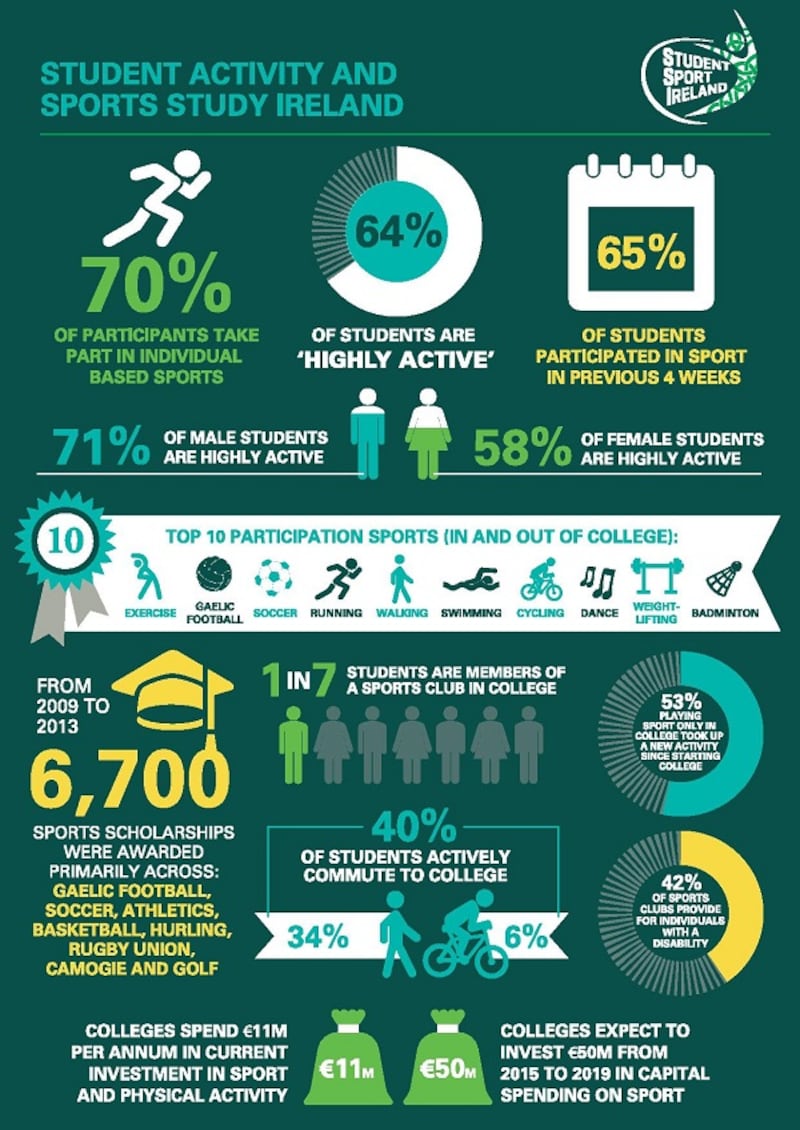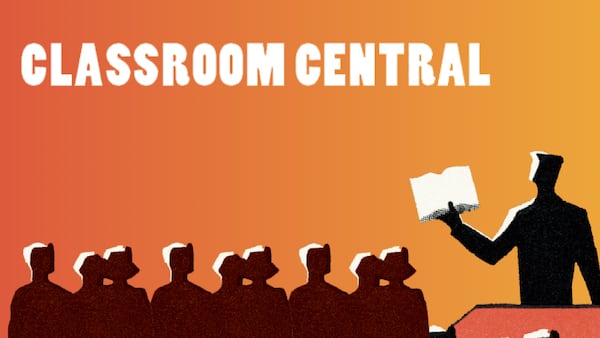A majority of third level students are more active than their peers in the general population, a study on sport and physical activity participation has found.
Research undertaken as part of a year-long study to establish the level of fitness among third level students found that 64 per cent of those surveyed are more active than those in comparable age groups in the general population.
The Student Activity and Sports Study (SASSI) Report 2016 found that 71 per cent of males and 58 per cent of females were 'highly active,' a category deemed sufficiently active for good health.
This compares to findings made in the Healthy Ireland survey (Department of Health and Ipsos MRBI, 2015) which reported that 56 per cent of men aged 15 – 24 years were classified as ‘highly active’. That figure decreased to 52 per cent of men aged 25 – 34 years.
For women, 34 per cent of 15- 24 year olds and 32 per cent of those aged 25 - 34 years were placed in this category, indicating that female students, in particular, are considerably more active than their counterparts in the general population.
Of those surveyed in the SASSI report, 13 per cent reported being non-drinkers with almost 80 per cent non-smokers and a similar proportion reporting never having used non-prescribed drugs

The research is the first comprehensive study of the physical activity and sporting behaviours of students attending third level in Ireland.
It was undertaken across 31 educational institutions on the island of Ireland by researchers from Ulster University, Dublin City University, University of Limerick and Waterford Institute of Technology.
Commissioned and published by Student Sport Ireland with the support of Sport Ireland and Sport Northern Ireland, the researchers found that 70 per cent of students participate in individual based activities such as cardio classes, weight training, circuit training and exercise to music.
Over 6,700 sports scholarships were awarded primarily across Gaelic football, soccer, athletics, basketball, hurling, camogie and rugby between 2009 and 2013. The number of scholarships secured by males was 60 per cent greater than females.
Despite high participation rates in physical activity it was found that only 40 per cent of students actively commute to college by walking (34 per cent) or cycling (6 per cent). Travelling by car (33 per cent) and by bus (20 per cent) were popular choices.
Student Sport Ireland is recognised as the governing body for third level sport on the island of Ireland. Its mission is to promote and develop sport and physical activity in third level colleges.
Chairperson of Student Sport Ireland Ms Carmel Lynch, said: "While we are encouraged by the high level of participation and activity, there are areas which are highlighted in the report that Student Sport Ireland and member colleges can work together to address such as the provision of facilities and programmes for students with a disability, initiatives to develop active commuting and gender balance in supporting our high performing athletes".
One in seven students are members of a sporting club and the five most popular participation sports in and out of college are general exercise (cardio classes, weight training, circuit training and exercise to music), Gaelic football, soccer, running and walking.
The research discovered a gender imbalance with 71 per cent of males being more active compared to 58 per cent of females.
Social influence was identified as the main determinant of participation within colleges with the odds of participation 57 per cent lower if a student felt that he or she ‘did not have anyone to do physical activity with’
Professor Marie Murphy who is professor of exercise and health at Ulster University said the survey data gleaned from the 9,000 participants along with the measurement of activity and fitness in over 400 students “provides a rich source of information” for researchers and policy makers.
“We hope this research will help guide future provision and the implementation of interventions designed to further increase participation at an important time of transition when lifelong physical activity and sporting habits may be established,” she said.











